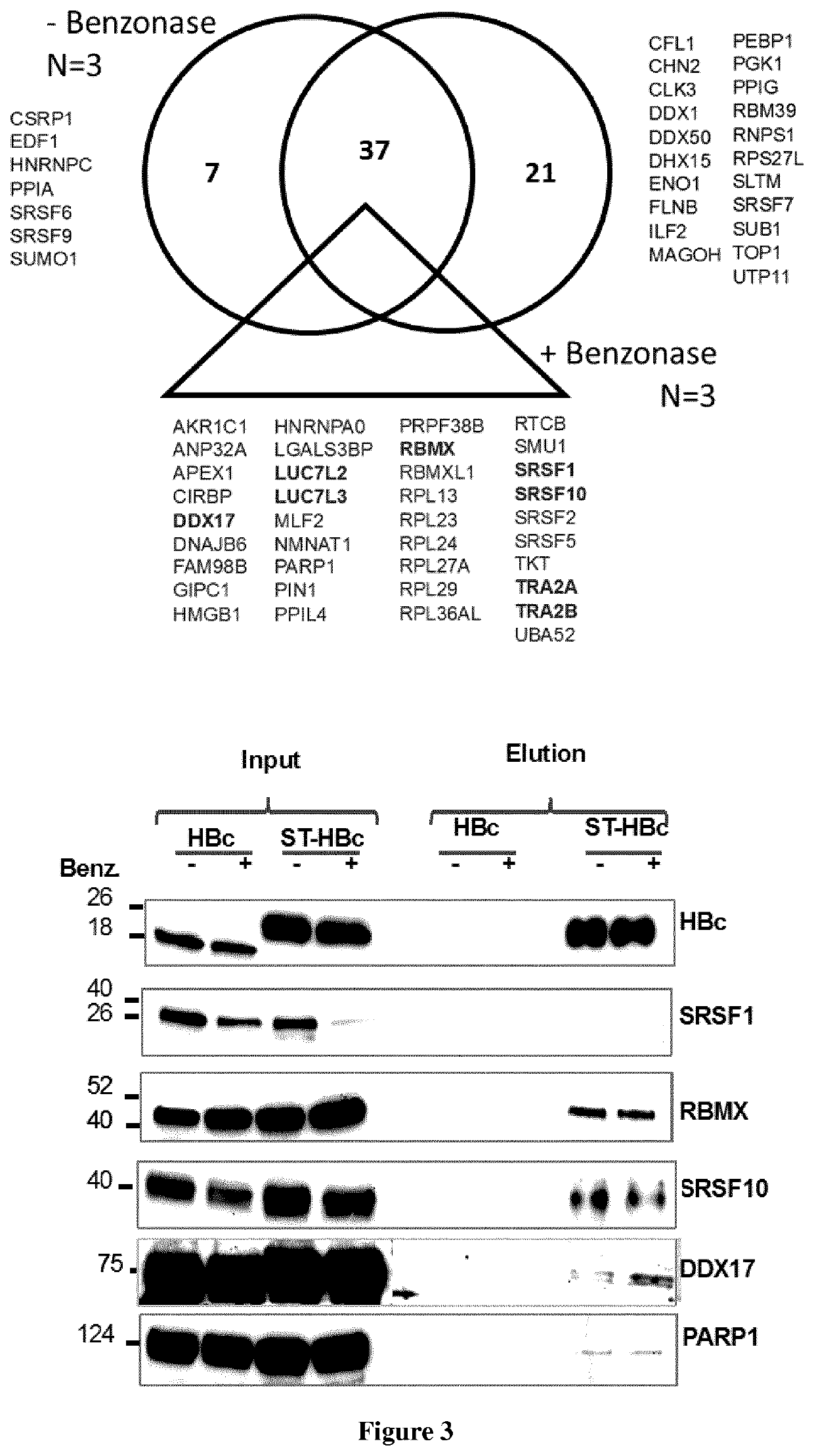Methods for treating hepatitis b virus (HBV) infection
a technology for hepatitis b virus and a pharmaceutical composition, applied in the field of methods and pharmaceutical compositions for treating hepatitis b infection, can solve the problems of mandatory life-long therapy with nuc, major health problems of hbv infections, etc., and achieve the effect of strong and differential modulation of hbv replication and strong reduction of viral replication
- Summary
- Abstract
- Description
- Claims
- Application Information
AI Technical Summary
Benefits of technology
Problems solved by technology
Method used
Image
Examples
example 1
[0070]Material & Methods:
[0071]Cultivation of Wild-Type HepaRG, Engineered HepaRG Cells, and Condition of HBV Infection.
[0072]Human liver progenitor HepaRG cells were cultured in Williams medium (ThermoFisher) supplemented with 10% of FBS (Perbio), Penicillin / Streptomycin (500 U / mL), glutamine (2 mM), hydrocortisone Upjohn (2.5 mg / L; Serb laboratory), insulin (5 mg / L; Sigma Aldrich). For the differentiation process 2% of DMSO was added to the above-described supplemented Williams medium. Differentiated HepaRG cells (dHepaRG) were infected as previously described (Gripon et al., 2002), with HBV genotype D inoculum prepared either from HepG2.2.15 or HepAD38 cells or with HBV genotype C (GenBank: KP017269.1) prepared from HepG2 cells, which were stably transduced with a linearized pcDNA3-HBV-1.35-genome-unit plasmid and selected on G418 resistance. The multiplicity of infection (MOI; expressed as virus genome equivalent / cell) is indicated in the figure legends, but was of 100 vge / cell ...
example 2
[0096]Material & Methods:
[0097]Cultivation of Primary Human Hepatocytes (PHH), and Condition of HBV Infection.
[0098]Primary human hepatocytes (PHH) were freshly prepared from human liver resections obtained from the Centre Léon Bérard (Lyon) with French ministerial authorizations as previously described (Leycluse and Alexandre, 2010). They were cultured in Williams medium (Thermofisher) supplemented with 5% of FBS (Perbio), Penicillin / Streptomycin (500 U / mL), glutamine (2 mM), hydrocortisone Upjohn (2.5 mg / L; Serb Laboratory), and insulin (5 mg / L; Sigma Aldrich). PHH were infected as previously described (Gripon et al., 2002), with HBV genotype D inoculum prepared either from HepAD38 cells (GenBank: KP017269.1), at 100 vge / cell. After 16 hours of infection, cells were washed. 6 days post infection, cells were treated with either Tenofovir (TDF), Lamivudine (3TC), or 1C8 at a concentration of 10 μM. Supernatants was harvested after each treatment, and cells were harvested 13 days pos...
PUM
| Property | Measurement | Unit |
|---|---|---|
| organic | aaaaa | aaaaa |
| mass spectrometry | aaaaa | aaaaa |
| structure | aaaaa | aaaaa |
Abstract
Description
Claims
Application Information
 Login to View More
Login to View More - R&D
- Intellectual Property
- Life Sciences
- Materials
- Tech Scout
- Unparalleled Data Quality
- Higher Quality Content
- 60% Fewer Hallucinations
Browse by: Latest US Patents, China's latest patents, Technical Efficacy Thesaurus, Application Domain, Technology Topic, Popular Technical Reports.
© 2025 PatSnap. All rights reserved.Legal|Privacy policy|Modern Slavery Act Transparency Statement|Sitemap|About US| Contact US: help@patsnap.com



